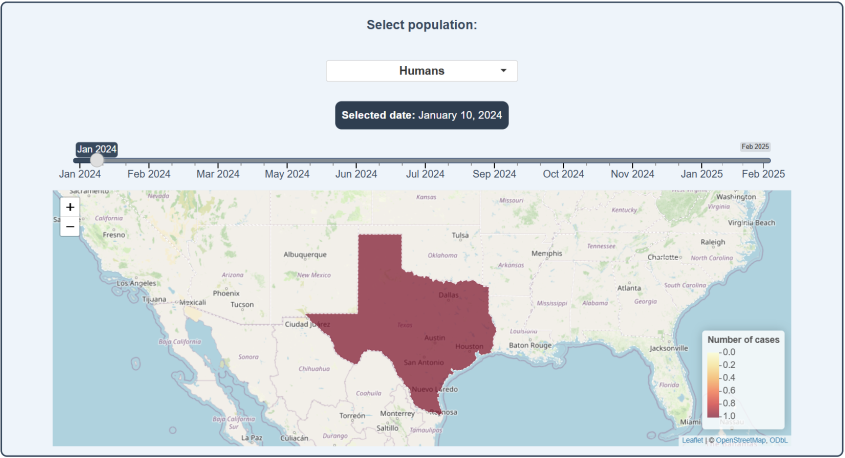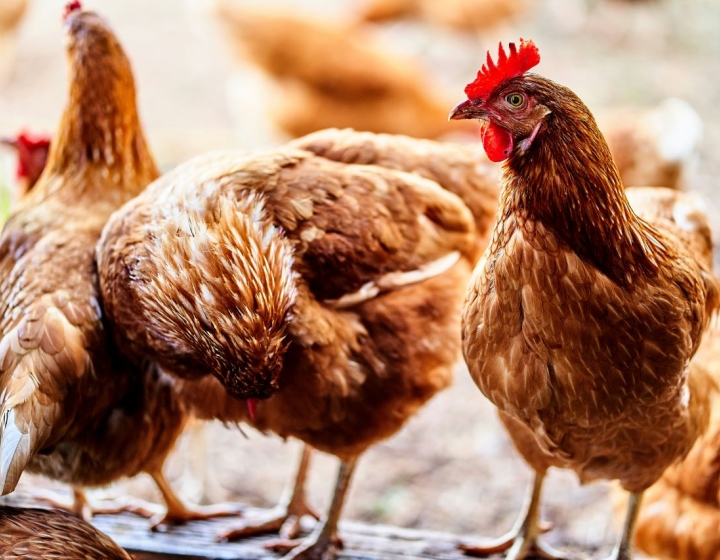Dairy
In March 2024, HPAI H5N1 virus was detected in dairy cattle for the first time. Veterinarians at the Cornell University College of Veterinary Medicine Animal Health Diagnostic Center (AHDC) were among the first to sequence the virus using samples from sick cattle in Texas.
Clinical signs
The main clinical sign is thickened, abnormal milk in lactating cattle. Other clinical signs in cattle include:
loss of appetite
lethargy
low-grade fever
mild respiratory signs
occasionally diarrhea
After the initial discovery, the virus was shown to have a predilection for the udder, due to the presence of receptors for H5N1 virus in the mammary gland. This results in large amounts of infectious H5N1 virus excreted in the milk from affected cattle. Youngstock and non-lactating cattle may get mild flu-like symptoms (fever, mild respiratory signs), but are usually not severely affected.
Unlike poultry, which experience high mortality rates from HPAI, cattle generally recover from the virus but can have a prolonged depression in milk production.
There are huge financial impacts on affected dairy farms, as they often deal with large numbers of sick cattle during the outbreak, with losses of milk production, the main source of dairy farm income.
Is milk safe for consumption?
Pasteurization of milk inactivates the virus, according to the U.S. Food and Drug Administration, making it safe for consumption.
The California Department of Public Health proceeded with a large recall of commercially sold raw milk due to contamination with H5N1 and potential human health implications.
How to test cattle for HPAI
The Animal Health Diagnostic Center (AHDC), as a Level 1 laboratory in the National Animal Health Laboratory Network (NAHLN) has tested more than 20,000 domestic poultry, wild bird and mammalian samples for this virus since their first HPAI H5N1 detection in Feb. 2022. Since March 2024, more than 20,000 bovine milk samples have been received for testing from more than 15 states, including from outbreak states.
The AHDC has extensive expertise and capacity for testing by polymerase chain reaction (PCR), virus isolation and whole genome sequencing to assist states, veterinarians, farmers, wildlife agencies and all animal and public health stakeholders in their response to this exceptional threat.
If you are a veterinarian interested in diagnostic testing, here is information about testing cattle for highly pathogenic avian influenza.
This page was last updated on Tuesday, Aug 26, 2025






